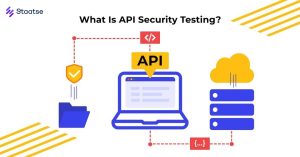An API (Application Programming Interface) is essential for communication between different software systems. API pentesting is a process that identifies security vulnerabilities in these interfaces, helping prevent attackers from exploiting them. This guide provides an overview of API pentesting, common API types, and examples of various API architectures.

What is API Pentesting?
API pentesting involves testing APIs for security weaknesses such as:
- Injection attacks (e.g., SQL or XML injection)
- Sensitive data exposure
- Broken object-level authorization (BOLA)
- Broken function-level authorization (BFLA)
Pentesters simulate attacks to identify vulnerabilities, helping secure APIs before attackers can exploit them.
Importance of API Pentesting
- Identifying Security Vulnerabilities: APIs are common targets for security breaches. Pentesters identify potential vulnerabilities and recommend mitigation strategies.
- Protecting Sensitive Data: APIs handle sensitive data like passwords, personal information, and financial details. A breach can lead to data theft, financial losses, and damage to the organization’s reputation.
- Preventing Unauthorized Access: APIs often expose data to external users. Pentesting helps assess access control mechanisms to ensure only authorized users can interact with the API.
- Maintaining Business Continuity: Regular pentesting ensures APIs are secure, avoiding downtime or service interruptions caused by security incidents.
- Defense in Depth: API pentesting is part of a larger security strategy, adding multiple layers of defense against attacks.
Common API Types
APIs come in several forms, each with its security considerations:
- Public APIs: Open to external developers, but require proper authentication and authorization to prevent misuse.
- Partner APIs: Accessible only to authorized partners and require strong authentication and access control mechanisms.
- Private APIs: Used internally within organizations. While often protected by network-level security, they should still be pentested to ensure robustness.
- Composite APIs: Combine multiple services into one. They improve performance but may introduce security challenges that need thorough testing.
Popular API Architectures
1. RESTful API
RESTful APIs (Representational State Transfer) follow specific principles, focusing on statelessness, resource-based operations, and standardized HTTP methods (GET, POST, PUT, DELETE).
2. SOAP API
SOAP (Simple Object Access Protocol) is a messaging protocol that uses XML for exchanging structured information. It supports multiple transport protocols (HTTP, HTTPS, SMTP) and provides advanced security features like message encryption, digital signatures, and authentication.
Differences Between REST, SOAP, and GraphQL
- REST: Simple, stateless operations using HTTP methods (GET, POST, PUT, DELETE).
- SOAP: Strict and secure messaging protocol that uses XML and supports various transport protocols.
- GraphQL: Allows clients to request exactly the data they need, avoiding over-fetching and under-fetching issues.
Conclusion
API pentesting is essential for securing modern applications. Regular testing helps identify vulnerabilities, ensuring that sensitive data is protected, access controls are enforced, and the APIs are robust enough to withstand attacks. Stay tuned for Part 2, where we’ll dive into specific pentesting tools and techniques to secure APIs.